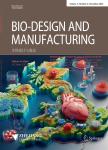Optimization-based conformal path planning for in situ bioprinting during complex skin defect repair
基于优化的共形路径规划指导原位生物打印修复皮肤损伤作者机构:State Key Laboratory of Tribology in Advanced EquipmentDepartment of Mechanical EngineeringTsinghua UniversityBeijing 100084China Beijing Key Laboratory of Precision and Ultra-Precision Manufacturing Equipment and ControlTsinghua UniversityBeijing 100084China Center for Bio-intelligent Manufacturing and Living Matter BioprintingResearch Institute of Tsinghua University in ShenzhenTsinghua UniversityShenzhen 518057China
出 版 物:《Bio-Design and Manufacturing》 (生物设计与制造(英文))
年 卷 期:2025年第8卷第1期
页 面:1-19,I0001页
核心收录:
学科分类:07[理学] 0701[理学-数学] 070101[理学-基础数学]
基 金:supported in part by the National Natural Science Foundation of China(Nos.52205532 and 624B2077) the National Key Research and Development Program of China(No.2023YFB4302003)
主 题:In situ bioprinting Path planning Robot control Skin injury repair
摘 要:The global demand for effective skin injury treatments has prompted the exploration of tissue engineering *** three-dimensional(3D)bioprinting has shown promise,challenges persist with respect to achieving timely and compatible solutions to treat diverse skin *** situ bioprinting has emerged as a key new technology,since it reduces risks during the implantation of printed scaffolds and demonstrates superior therapeutic ***,maintaining printing fidelity during in situ bioprinting remains a critical challenge,particularly with respect to model layering and path *** study proposes a novel optimization-based conformal path planning strategy for in situ bioprinting-based repair of complex skin *** strategy employs constrained optimization to identify optimal waypoints on a point cloud-approximated curved surface,thereby ensuring a high degree of similarity between predesigned planar and surface-mapped 3D ***,this method is applicable for skin wound treatments,since it generates 3D-equidistant zigzag curves along surface tangents and enables multi-layer conformal path planning to facilitate the treatment of volumetric ***,the proposed algorithm was found to be a feasible and effective treatment in a murine back injury model as well as in other complex models,thereby showcasing its potential to guide in situ bioprinting,enhance bioprinting fidelity,and facilitate improvement of clinical outcomes.




